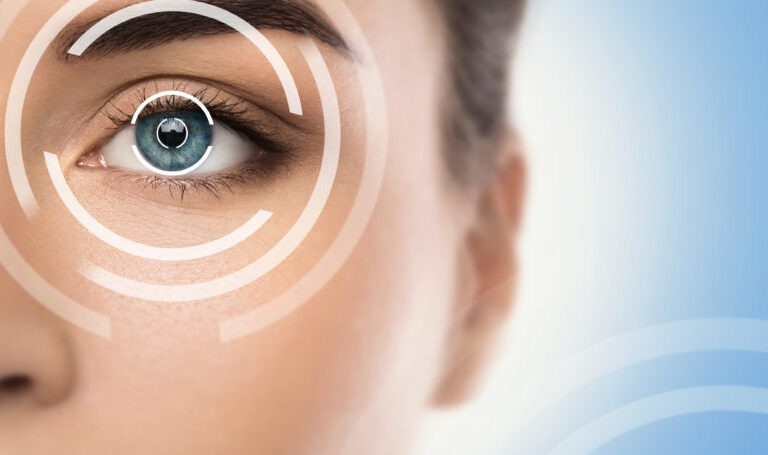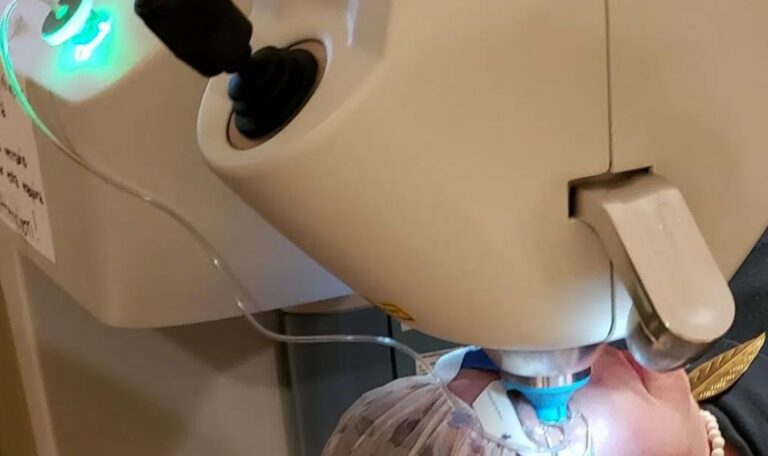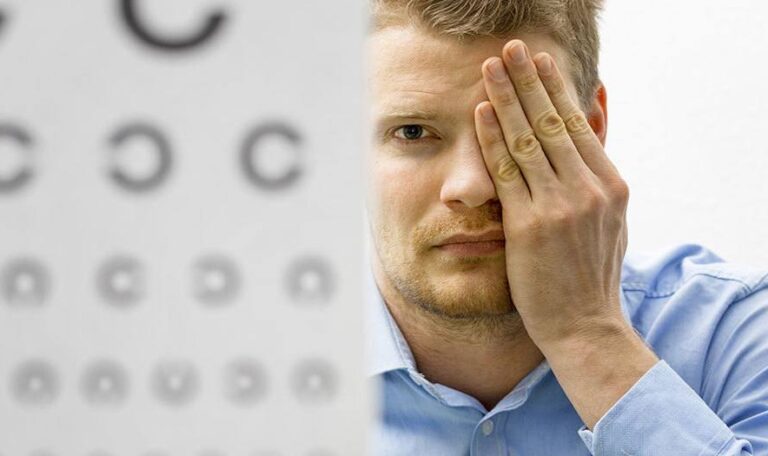Many people get bored of wearing glasses, and the best solution to this boredom is Lasik eye surgery at the Royal Spanish Center in Abu Dhabi. This process is also an ideal solution for those who choose to wear contact lenses that may tire their eyes in a summer residence or in the workplace and need constant moistening. If you encounter any of these scenarios, you may be ready to forego your glasses and contact lenses in favor of a permanent solution to your vision problems. Here are six frequently asked questions — and their answers — about LASIK.
LASIK Eye Surgery
Before having LASIK surgery at the Royal Spanish Eye Center in Abu Dhabi, you will be asked to meet with your ophthalmologist for a comprehensive eye examination. During this first appointment, your doctor will evaluate the shape and thickness of your cornea, pupil size and check for refractive errors such as nearsightedness, farsightedness, astigmatism, and any other eye conditions. Your doctor may also check to see how wet your eyes are and may recommend preventive treatment to reduce your risk of developing dry eyes after surgery.
Who is the ideal candidate for LASIK eye surgery?

- at least 18 years old to make eye surgery
- You don’t have an autoimmune disease, which can make it difficult to recover after surgery.
- not pregnant or breastfeeding. Elevated hormone levels during pregnancy can affect the shape of your eyes, making it best to wait for surgery until hormone levels return to normal.
- Enjoy healthy eyes, including no history of cataracts, chronic dry eyes, or glaucoma.
Is LASIK painful?

Fortunately, LASIK surgery is not painful. Right before the procedure, the surgeon will place numbing eye drops in both eyes. While you may feel a little pressure during the procedure, you should not feel any pain. Your surgeon may also give you another medication, such as Valium, to help you calm down and relax during the procedure. After surgery, it’s common to feel a slight itch or a burning sensation in your eyes, but this should go away quickly.
What does LASIK eye surgery include?
The main goal of LASIK eye surgery is to change the shape of the cornea so that it can better focus images on the retina, allowing you to see more clearly. This effect is achieved through the use of two lasers.
Lasik eye preparations
- Your doctor will test your eyes to make sure your health history is correct and up-to-date.
- Anesthetic drops will be put in both of your eyes and you will be given a sedative.
- Your surgeon will use a femtosecond laser to create a thin, circular “flap” in the cornea. The flap is then folded back, allowing the surgeon to access the stroma, or cornea beneath it.
- A cold UV laser will be used to remove small amounts of tissue from the cornea to reshape it. This enables it to focus light more precisely on your retina for improved vision.
- If you are nearsighted, a laser will be used to flatten your cornea. If you are farsighted, the laser will create a steeper cornea.
- The flap is then put back in place to cover the area from which the corneal tissue was removed.
- The cornea will then be given time to heal naturally.
- LASIK eye surgery is a simple procedure. Even though you’re awake, numbing eye drops with medication will help you stay calm and unfazed by the procedure. Where the LASIK process takes about twenty minutes for both eyes.
Does sight return 6/6 after LASIK operation?

Yes, the vision returns well after the operation, but you have to adhere to some things as follows:
- After LASIK eye surgery, you will undergo a short eye examination after the operation. Once your doctor confirms that the surgery was successful, you will be allowed to go home, but must be led by a family member or friend. You will not be allowed to drive until after a follow-up visit with your eye doctor, which usually occurs the day after surgery. At that time, he or she will confirm that your vision is within the legal standard of leadership.
- About a week after surgery, you’ll meet with your doctor again to make sure your eyes are healing properly. At that visit, your doctor will determine if follow-up visits are necessary.
- While you are allowed to work the day after the procedure, it is recommended that you take two days off to rest.
- You should also refrain from strenuous exercise for the week following surgery, as this can hinder the healing process. You should also avoid wearing eye makeup for a week as well. Once you resume applying makeup, you should use new products to avoid the risk of infection.
- The doctors of the Royal Spanish Center may provide you with eye drops and artificial tears that will be prescribed to you. They are given to help speed up the healing process, fight bacteria and infection, and fight dry eye syndrome.
- Furthermore, some patients may experience a spot of blood on the white of the eye called a subconjunctival hemorrhage. This is common and can take up to two weeks to resolve.
When does the vision stabilize after the LASIK operation?

- Immediately after LASIK eye surgery, you should begin to see things from a distance that you haven’t seen before. While your eyesight will likely be blurry at first, it should stabilize and continue to improve over the first few days after surgery. It is not uncommon for your eyes to sting a little or feel a little gritty and/or sensitive to light after the procedure.
- Patients have described their vision after LASIK as being similar to looking underwater. Patients are usually asked to go home and keep their eyes closed for a few hours.
- After four to six hours, patients may feel relatively comfortable in their vision.
- Most patients feel very comfortable with their new vision the next day.”
- To see 20/20 is very achievable with LASIK surgery. However, this may depend on the severity of your vision prior to the procedure.
Price of LASIK operation
Depending on the cost of the operation LASIK is based on the procedures required within the Royal Spanish Center. Therefore, it is necessary to communicate with the specialists in the center to know the full package of the operation and examinations before and after the LASIK eye
Does LASIK eye surgery cause blindness?
Mostly it does not cause LASIK blindness operation. But in some specific cases, a person can become blind if he does not conduct examinations carefully before performing the operation. It may not be suitable for the elderly, or those with immune diseases, and if performed, its complications could be serious, up to blindness.
The difference between LASIK and Femto-LASIK
In short, LASIK is a technique that uses a laser to adjust the shape of the cornea to treat vision defects such as (myopia – farsightedness – astigmatism). The difference between LASIK and Femto-LASIK is the method of directing laser beams to correct retinal defects according to each case, and what is in it.
Lasik makes you feel Free
What are the visual deficiencies that LASIK eye surgery?
While 50% of people have a visual impairment, the three most prominent are the following:
- Treatment of myopia The
the main problem is focusing light in front of the retina rather than gathering on its surface, causing blurry vision of distant objects.
- Treatment of visual defects with LASIK (farsightedness):
In this case, light accumulates behind the retina, which leads to the blurring of nearby objects.
- Treatment of vision defects with LASIK operations: Astigmatism
In the case of astigmatism, light accumulates on several points on the retina, which leads to blurring of vision regardless of the distance between them.

Types of LASIK operations?
There are three types of LASIK operations to repair vision defects, and each has its own characteristics. Each of them has suitable conditions for treatment. It can be summarized in the following points:
- Correcting errors by LASIK:
Doctors use a microkeratome device — a surgical scalpel — to remove part of the cornea. So that the surgeon can send lasers on the cornea to change its shape and correct vision errors, nearsightedness, and astigmatism.
- Correcting visual errors using Femto-LASIK:
This process is no different from the previous one. Doctors do not use the microscopic cornea device at all, and the surgeons use an alternative, a femtosecond laser device. For the treatment of visual impairment such as nearsightedness and astigmatism.
What is Astigmatism, Causes and how to treat it?
- Femto Smile Correction:
In this procedure, the doctor uses a laser exclusively to correct vision errors. The doctor obtains excellent results in cases of nearsightedness, farsightedness and astigmatism.
Which is better Femto LASIK vs LASIK?
Doctors consider the Femto-LASIK procedure to be the best because of its complete reliance on the laser, and its fewer side effects compared to the traditional LASIK procedure.
What is the best Femto Lasik vs Femto smile?
As mentioned above, the diagnosis of vision defects determines the type of operation. LASIK and the second femtosecond operation treat all types of visual impairment (myopia, astigmatism).
Using a mobile phone after LASIK
Surgery: Doctors advise not to use a mobile phone after LASIK surgery for a certain period.
Contraindications after LASIK
After laser eye surgery, take these precautions to prevent injury or infection:
- Do not shower or wash your hair until the next day.
- Be careful when showering or bathing. Make sure to keep soap out of your eyes when washing your hair, and watch out for hair spray and shaving lotion.
- Do not rub your eyes for at least a month.
- Don’t drive until you feel comfortable. Get your doctor’s approval first.
- Wear the eye protection/goggles that your doctor gave you while you sleep for the first week.
- Keep tap water out of your eyes for at least a week.
- Avoid swimming pools, Jacuzzis, saunas, and lakes for at least 3 weeks.
- Without eye make-up for at least a week. Partially discard used products to avoid infection.
- Do not color or permit your hair for at least 10 days.
- No exercise for two days.
- Wear eye protection for at least a month once you start playing sports and activities again.
- Avoid dirty and dusty environments for 7 days.
- Bright sunlight can cause scarring, so wear sunglasses on bright days for at least a year

